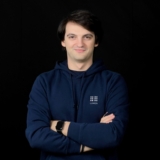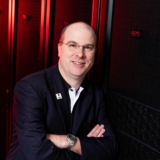.lightweight-accordion { border: 1px solid #ccc; border-radius: 4px; padding: 5px; margin: 5px 0; } .time { font-size: 0.875rem; /* Option 3: Using rem ...
.lightweight-accordion { border: 1px solid #ccc; border-radius: 4px; padding: 5px; margin: 5px 0; } .time { font-size: 0.875rem; /* Option 3: Using rem ...
.lightweight-accordion { border: 1px solid #ccc; border-radius: 4px; padding: 5px; margin: 5px 0; } .time { font-size: 0.875rem; /* Option 3: Using rem ...
.lightweight-accordion { border: 1px solid #ccc; border-radius: 4px; padding: 5px; margin: 5px 0; } .time { font-size: 0.875rem; /* Option 3: Using rem ...
.lightweight-accordion { border: 1px solid #ccc; border-radius: 4px; padding: 5px; margin: 5px 0; } .time { font-size: 0.875rem; /* Option 3: Using rem ...
.lightweight-accordion { border: 1px solid #ccc; border-radius: 4px; padding: 5px; margin: 5px 0; } .time { font-size: 0.875rem; /* Option 3: Using rem ...
.lightweight-accordion { border: 1px solid #ccc; border-radius: 4px; padding: 5px; margin: 5px 0; } .time { font-size: 0.875rem; /* Option 3: Using rem ...
.lightweight-accordion { border: 1px solid #ccc; border-radius: 4px; padding: 5px; margin: 5px 0; } .time { font-size: 0.875rem; /* Option 3: Using rem ...
In this episode of the NVIDIA AI Podcast, recorded live at the GTC 2024, host Noah Kravitz sits down with Adam Wenchel, co-founder and CEO of Arthur. Arthur ...
Can machine learning help predict extreme weather events and climate change? Christopher Bretherton, senior director of climate modeling at the Allen Institute ...
Step into the realm of the unseen with Robin Wang, CEO of Living Optics. The startup cofounder discusses the power of hyperspectral imaging with AI Podcast ...
Talk about scrubbing data. Curtis Northcutt, cofounder and CEO of Cleanlab, and Steven Gawthorpe, senior data scientist at Berkeley Research Group, speak about ...
Dotlumen is illuminating a new technology to help people with visual impairments navigate the world. In this episode of NVIDIA’s AI Podcast, recorded live at ...
Viome CTO Guru Banavar discusses how the startup’s innovations in AI and genomics advance personalized health and wellness.
AI-driven change is in the air, as are concerns about the technology’s environmental impact. In this episode of NVIDIA’s AI Podcast, Daniel Castro, vice ...
In today’s episode of NVIDIA’s AI Podcast, host Noah Kravitz talks with Pinar Seyhan Demirdag, co-founder and CEO of Cuebric. Cuebric is on a mission to offer ...
NASCAR races are all about speed, but even the fastest cars need to factor in safety, especially as rules and tracks change. The Ohio Supercomputer Center is ...
Here’s some news to still beating hearts: AI is helping bring some clarity to cardiology. Caristo Diagnostics has developed an AI-powered solution for ...
DigitalPath is igniting change in the golden state — using computer vision, generative adversarial networks and a network of thousands of cameras to detect ...
Thomson Reuters, the global content and technology company, is transforming the legal industry with generative AI. In the latest episode of NVIDIA’s AI ...


















